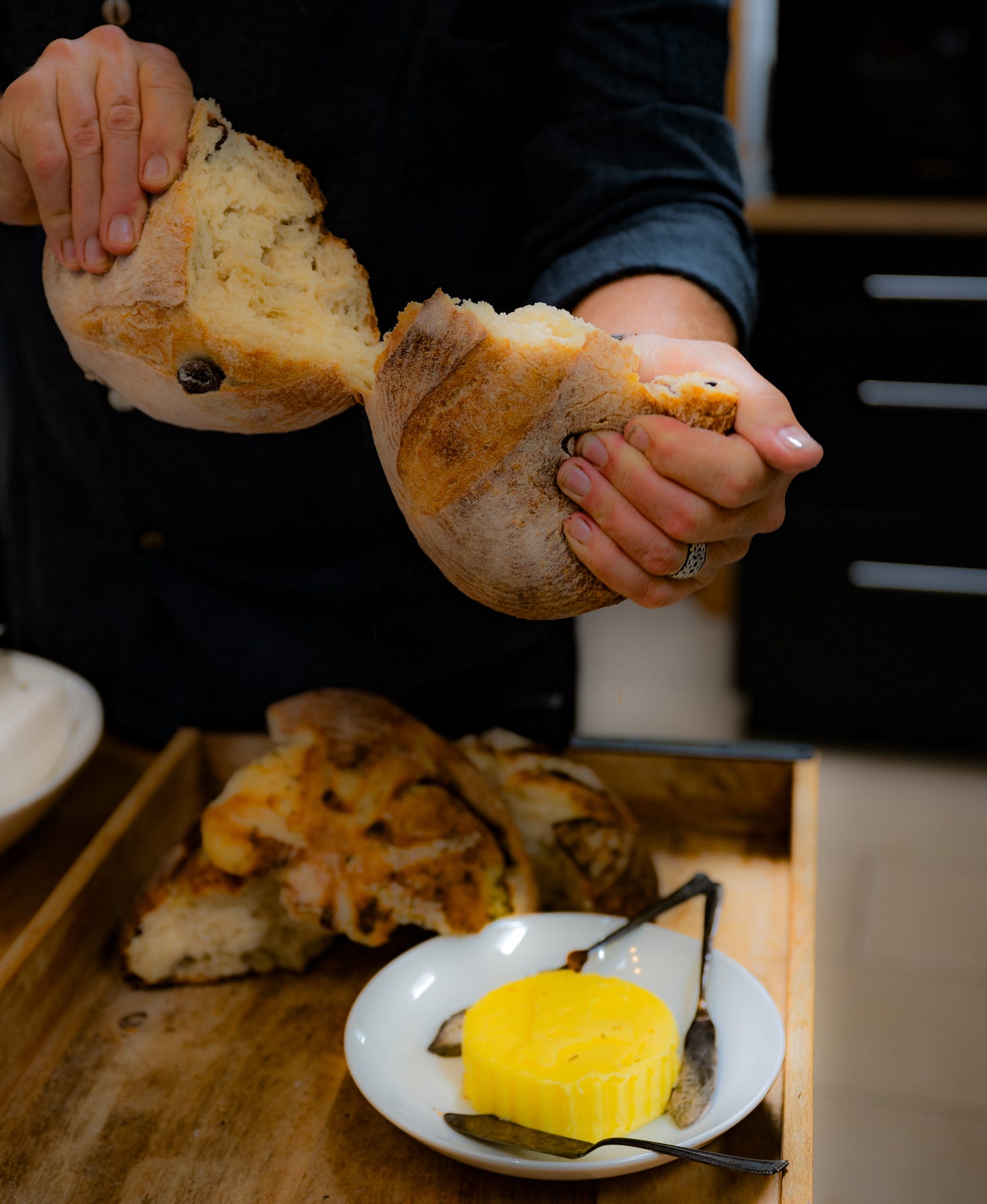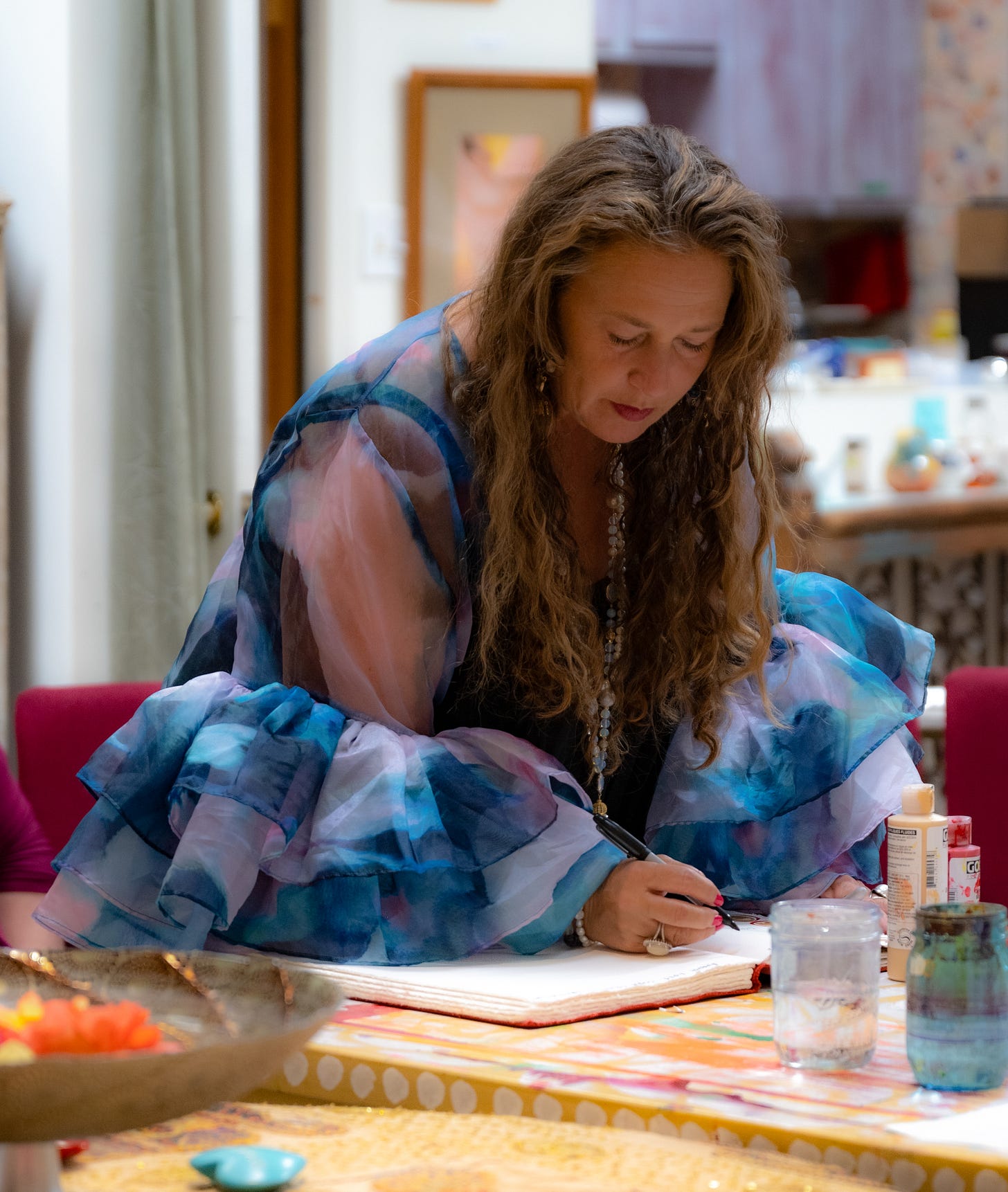 Gifts from the Sea on the Sonoma Coast
Gifts from the Sea on the Sonoma Coast
The Intentional Table
A Green Sea Anenome looking for a snack! In the culinary arts and herbal medicine worlds, sea vegetables have carved out a niche as versatile, nutrient-dense ingredients. Among the most celebrated are kombu and bladderwrack, two brown seaweed types stapled in traditional diets and remedies for centuries. 0715 @ Bodega Bay. = Heaven #IAMSOSPOILED because I live only 45 minutes from several beaches with an incredible abundance of seaweeds. I went yesterday and hand harvested about 20 pounds! The ones I love the most are Kombu, Bladderwrack, Nori, Sister Sarah, and Feather Boa. Yesterday,...
info_outline Arugula... it's a vegetable... right?
Arugula... it's a vegetable... right?
The Intentional Table
Arulgula…. it’s a vegetable! Click the Image above to hear it! Arugula Examining the Health Benefits and Nutrition of this Powerhouse Leafy Green Arugula was a valued green in ancient Rome, where it was celebrated in poetry and prose for its effects on mind and body. Unfortunately, it’s far less popular today than its cousins spinach and kale, even though arugula may be the healthiest green of all. In this article, we’ll look at the evidence for arugula’s health benefits and see if those ancient Romans were right to celebrate it. I know I shouldn’t do this because of...
info_outline Auto Immune Release Series Part 2
Auto Immune Release Series Part 2
The Intentional Table
Apple Blossoms @ Musea. Showy! Well, here it is, our second week of thoughts and inspirations about Auto-Immune conditions, how we all have a little of it going all the time, and what we can do about it. Spoiler alert: I am going to write about a plant-based diet this time. My hamburger loving self cringes. But remember that I said last time everything in moderation? Here is a good time to take a breath and remember that you do not have to go cold turkey on the turkey! Increase your intake of rainbow-colored fruits and vegetables. Consume more colorful fruits and vegetables to get as much...
info_outline Auto Immune Release Series Part 1
Auto Immune Release Series Part 1
The Intentional Table
Apricots Anyone? @ Musea What is an autoimmune disease? Why are we speaking about this, at length at the Intentional Table? Great questions! Let’s do this in reverse order. The why of this is life. We all know we are alive, as the machines that go ‘ping’ tell us when we are strapped in. But we also understand that there is way more to it than that. We are sometimes led to think that we are simply biological machines and that, like getting the oil in your car changed, you can go to the doctor if you live your life poorly, and they will ‘fix’ you. Then, out the door and on your...
info_outline Intentional Wellness from Musette
Intentional Wellness from Musette
The Intentional Table
Greetings all, How wonderful it is to speak to you through this simple platform. I wish we could all sit around the Intentional Table itself (mine or yours) and drink in the feeling of togetherness, which is the ‘why’ in the ‘what’ around here. I would like you to have a gift. It’s a preview of a book I am writing about Nutritional Wellness. It’s not a b…
info_outline I Taste, Therefore I Am...
I Taste, Therefore I Am...
The Intentional Table
At the Intentional Table, we taste. Do we ever! Every person who learns to eat, cook, or serve should also learn how to taste. Sounds easy, right? Not so fast, my dearest. Taste is an objective and a subjective thing! It’s objective because every person that is a person (despite a few unfortunate outliers) has taste buds built into the design. However, just because you have the hardware doesn't mean you have the software. If you do have the software, then you have an appreciation of fundamentals when it comes to how your organ of perception, which is your mouth, your tongue, your nose,...
info_outline Biodynamics Basics
Biodynamics Basics
The Intentional Table
Hello, my intrepid Intentional Table guests! Today, with our afternoon wine, will be the topic that is near and dear to our hearts here. Biodynamics. What is it, you may ask? Why is it important to this table, Musea, and our lives? All good questions. Read on, and if you want the DEEP DIVE EXTRA CREDIT, it’s at the bottom.⬇︎ There are two polar views of scientific reality when it comes to the consideration of the active practice of biodynamics. One is the left-brain approach, represented by the Newtonian Analytical view that has dominated science for the last two centuries. Newton...
info_outline February 4 is World Cancer Awareness Day
February 4 is World Cancer Awareness Day
The Intentional Table
Take a look at this team. They are really on it. Click the image for link. You may ask yourself, now, why would he say that? It certainly could apply to any human, anywhere. There are 340 activities around the world for Cancer Day. So, it must be happening, you know, out there somewhere. Hubris leads to nemesis. Cancer, hunger, war, disease, and crime all happen. It must happen because it’s all over the news. It’s hard to connect with anything like this while you read it on the device in your hand while it charges at Starbucks as you sip your mocha. Our children have never seen it. Our...
info_outline The Agony and The Ecstasy of the Table
The Agony and The Ecstasy of the Table
The Intentional Table
I thought I would take a few minutes to see if you would like to travel with me back in time to revisit exactly what the intentional table is and how it's considered here in our little conversation and in real life. If you asked me to cook for you, I would be delighted. That's all there is to it. I wouldn't question what our budget was, what the logistics were, or really what it was that you wanted to eat when you're with whom. All those things are in a particular way beside the point. What this means is that you're asking me to create with intention, something for you that actually serves...
info_outline Only the wounded eye can see
Only the wounded eye can see
The Intentional Table
I came up with this phrase while meditating yesterday. It was inspired by something my dear friend Andrew Johnstone told me recently. At the Intentional Table, we find ourselves circling back to an important theme with a recurring and increasing frequency: Gratitude. It's an incredibly overused, misused, and, I think, sometimes misleading term. Oxford says, “the quality of being thankful; readiness to show appreciation for and to return kindness.” In the latter part of that sentence is the key, which is ‘returning.’ There is an idea that we commonly refer to in Intentional...
info_outlineIt is not difficult to wax poetic about the harvest of 2023.
Here at Musea in Sonoma, we often need to take a moment to pause to realize the incredible offerings of these people and this place. The harvest is in! All the fruit has been picked. The wine is fermenting. The pickles have been pickled and the canning jars, I am happy to report are complete. It was a rather hot and steamy canning session this year.
Rituals. Rituals and invocations, and a simple noticing of relationship with earth, plants, and sky. A place and a people. So many things, so many intricacies to notice and tend to. One of the most joyous things that we have at our intentional table is an acknowledgment of this land that we steward. With gentle care, it yields flowers, oranges, lemons, pluots, apricots, plums, pears, and walnuts, as well as beautiful, full, ripe grapes. All of these things give generously, abundantly, and frequently to us. What a gift of life, this place.
The red iron oxide, present from the beginning of this planet, is infused into our very blood and equally obvious in the crimson leaves as they turn. They are respecting that which is theirs to do. To grow, to yield, and then to decay, only to be transfigured and reformed into tiny shoots of probability when the sun returns.
What does it really mean to harvest? Does it mean simply to gather in that what you have sewed? Or is it a larger concept? At the Intentional Table, harvest is not about being rewarded for the effort, because sometimes no effort is required. It's truly a gift. It's an artifact of sacred reciprocity between stewards and stewarded. Its tempo and measure are in balance with our commitment to notice, act, and respect. My father once told me that “in order to master nature, you must agree to be mastered by it.
This is the how in the lands of McCloud, currently under our care and tender hands, that we proceed with our life.

There is an old joke that I learned when I lived in the Philippines. They have a sort of national bread that they call Pan de sal. Which simply means bread with salt. But the joke is when you ask, “Why is this bread so delicious?” the answer is always “Pawis ng pandecero”, which translates as ‘the sweat of the bread maker’. This takes on greater meaning when you realize that there, in the small hours of the day, the long rolls of bread are slapped across the back and shoulders of the cooks, to stretch the dough and activate the gluten. Yes, right across their naked backs. I have seen it myself on a night walk through the village.
Our abundant harvest, ‘abbondanza’ in Italian, gives us so many of the things that we will need to survive the winter, remaining in relationship with the land until the spring promises repetition of revelry in the spring.
There is so much more to this harvest and food. It's also about collecting in of energy. Not really a retraction or retreat, but more like a maturation. It's a rite of passage or a completing ritual, and no one knows how to do a ritual better than my wife.

In the same way that I share these thoughts with you, I also feel your energy and you sharing your thoughts with me. I'd be lovely if you could leave a comment, words, or thoughts. Perhaps a small poem in the comments. What is it that harvest means to you? Well, there are plenty of jars of marinara sauce, relish, chowchow, and herbs and spices put up here at Musea. Perhaps you'd like to come by and sit for a while and enjoy a glass of wine. I will put on some pan de sal!



